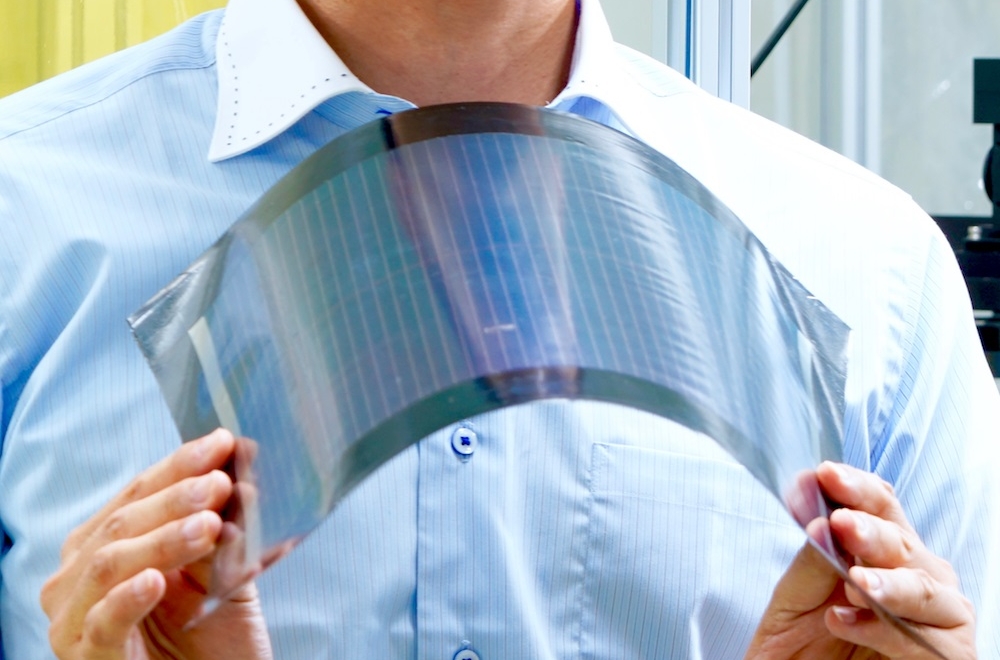Harnessing the Strengths of a Semiconductor Technology to Power a Hydrogen Economy
2019/04/17 Toshiba Clip Team
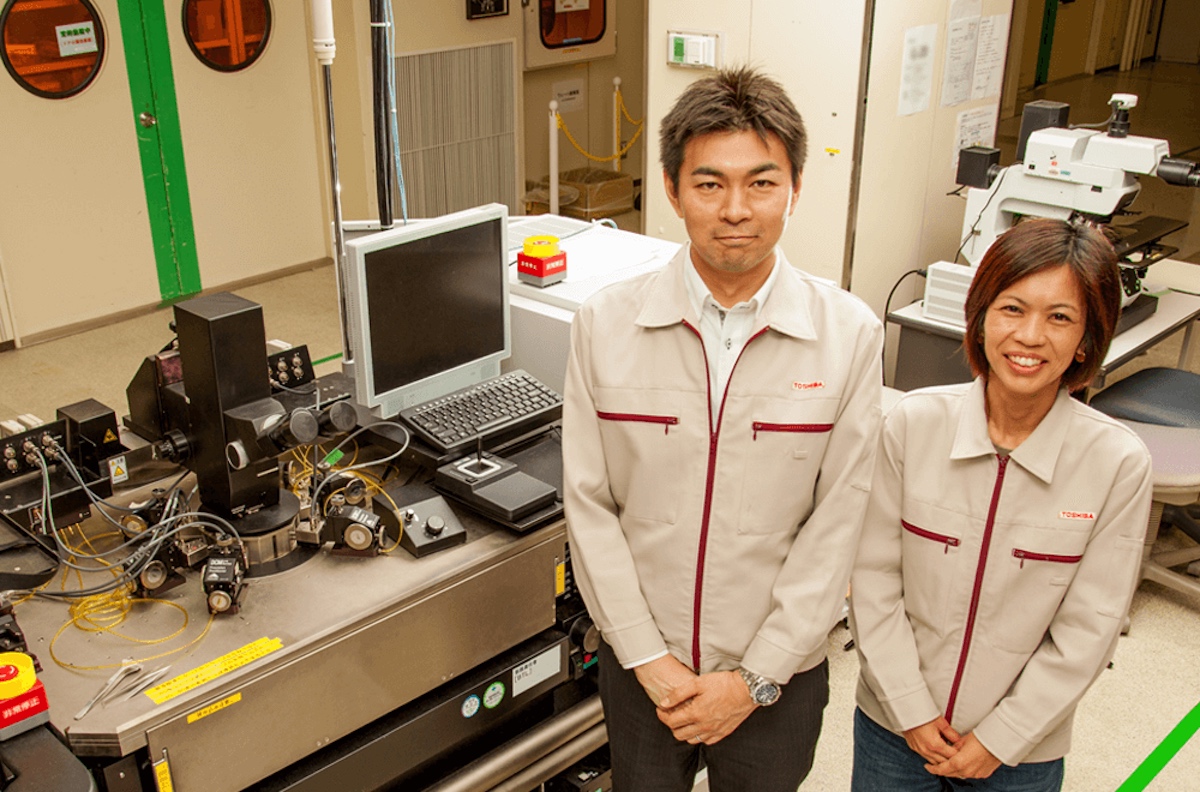
The idea of a hydrogen-powered future might seem like something straight out of science fiction, but believe it or not, the technology for hydrogen energy is real. Japan’s Ministry of Economy, Trade and Industry estimates that hydrogen energy will expand into an 8 trillion yen market in Japan by 2050.* In fact, in Japan, hydrogen is seen not only as a means to combat global warming, but as a step towards securing a stable, domestically-produced supply of energy in a country otherwise strapped for traditional natural fuel reserves.
* Council for a Strategy for Hydrogen and Fuel Cells, “Strategic Roadmap for Hydrogen and Fuel Cells”
In recent years, numerous proofs of concept involving hydrogen have drawn public attention, from fuel cells for vehicles to electricity production methods using hydrogen created directly from existing natural gas infrastructure. These advances are gradually demonstrating the possibilities of hydrogen energy and the next-generation lifestyles it can help to create.
However, hydrogen itself is highly flammable: even the tiny sparks generated by static electricity can ignite it. If it is to be used in daily life, we need to develop safe storage and transfer systems—and leak detection will be a critical component of such systems. However, that’s more easily said than done. Hydrogen is odorless and tasteless, and unlike natural gas, to which odorants can be added to alert users of leaks, it must be kept completely pure for use in power-generating applications. In short, if hydrogen is going to be a viable energy source, secure storage and leak detection are important considerations.
Enter the hydrogen sensor. It’s a device similar to a smoke detector, designed to quickly identify hydrogen leaks and alert users. In a hydrogen-powered world, we will need such sensors everywhere the gas is stored or used; two Toshiba researchers have developed a technology to make this possible.
A hydrogen sensor built with semiconductor technology
Take a moment to think about where exactly leak detection will be needed: Areas around hydrogen production equipment and distribution pipelines are some examples. But that is just the tip of the iceberg. We’ll also need to monitor vital systems including residential fuel cells, hydrogen-powered vehicles, and fueling stations, too, and the list goes on from there. That is exactly why sensors are such a major issue.
Hiroaki Yamazaki of Toshiba’s Corporate Research & Development Center, describes the hurdle of sensor design: “There are a lot of many different applications for hydrogen sensors, and we’ll need to install them in many places. We need a design that can be mass-produced at low cost, and that doesn’t consume a lot of power. But the challenge is that existing sensor designs revolve around a heating element; if you heat the hydrogen, you get quicker detection, but speed comes a steep cost in terms of energy.
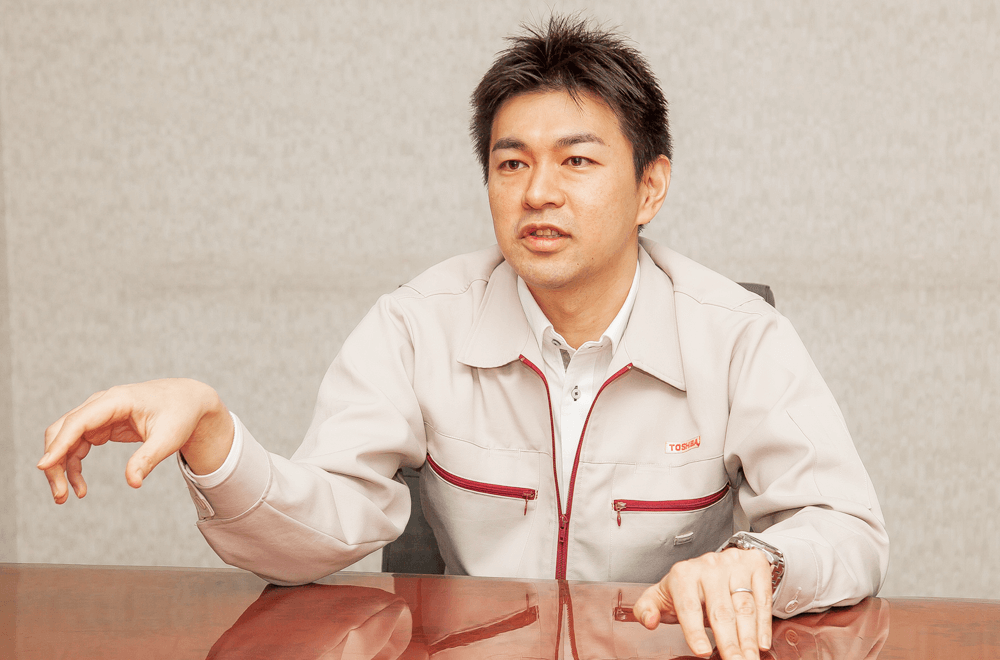
Hiroaki Yamazaki, Toshiba Corporate Research & Development Center
Toshiba is taking the lead in overcoming this heat vs. energy dilemma by applying MEMS technology. MEMS, which stands for “Micro Electro Mechanical Systems,” are the result of applying semiconductor manufacturing technology to the fabrication of tiny, movable parts on top of silicon or other types of substrate.
Yamazaki explains, “Typical semiconductors do not have mechanical parts. What sets MEMS technology apart is its ability to create microscopic moving parts. Toshiba had nearly a decade of expertise with MEMS, and we suspected that those kinds of parts might be the key to ending the tug-of-war between detection time and power consumption. But at that time, we had no experience using MEMS in applications to detect gasses. That was uncharted territory.”
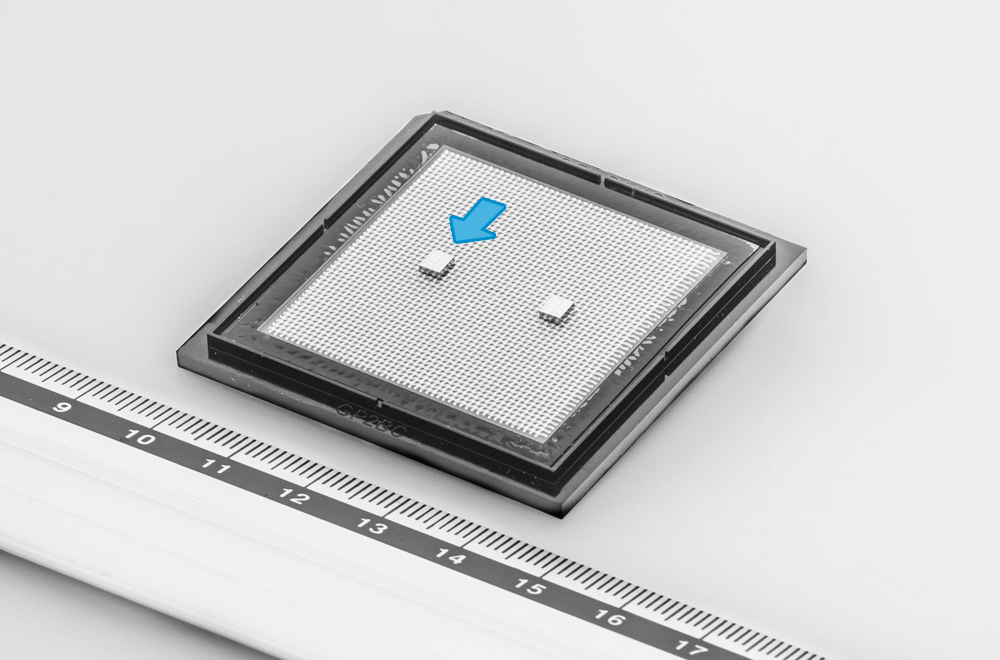
The newly developed hydrogen sensor chip (indicated with arrow)
Poring through a few hundred research paper
Once the researchers had reviewed Toshiba’s extensive body of knowledge on MEMS, the basic design for a new hydrogen sensor started to take shape. The idea was to outfit the sensor membrane—the part of the sensor that comes into contact with any leaked hydrogen gas—with a material that adsorb hydrogen and expand while doing so without heating.
The sensor design is simple yet elegant. To turn the chemical reaction into a signal, the sensor membrane is positioned above a movable electrode. Atoms from leaking hydrogen diffuse into the material, causing it to expand. This pushes the membrane onto the movable electrode, onto another fixed electrode. The more hydrogen leaks, the smaller the distance, until finally a circuit forms and triggers the alarm.
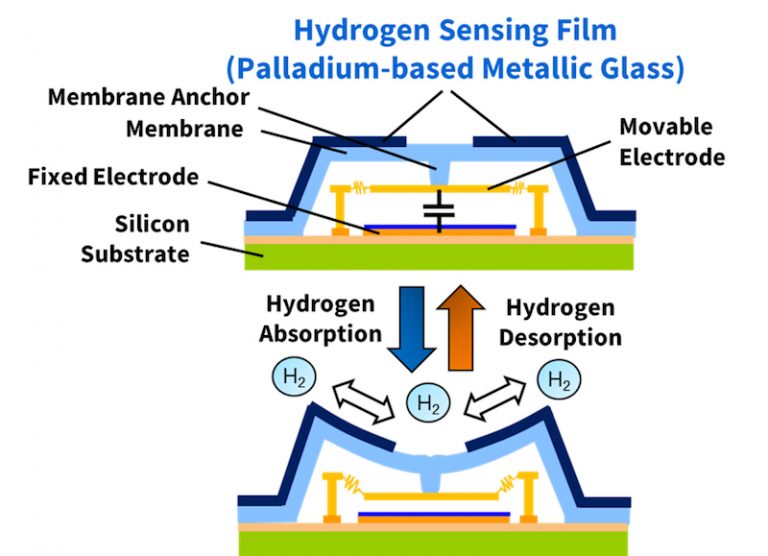
But there was still one key ingredient missing: What kind of metals to use in the sensor membrane?
Initially, the development team focused on elemental palladium, which is able to absorb hydrogen to form palladium hydride. However, the reaction takes time, and used in a sensor would cause an unacceptable delay. On top of that, getting palladium hydride to release adsorbed hydrogen requires heat, so electricity would still be required to make the design reusable.
Yumi Hayashi, a researcher from Corporate Research & Development Center, thought of a different material. She explains her approach by saying, “When you start poking around in a new field, of course you aren’t going to know a lot about it. However, you can usually still establish a framework for yourself by reading existing studies from researchers in that field. That’s really the shortcut to success: Learning how to pull studies from fields outside your own, carefully read through them, and use that information in your own experimentation. So when we needed to come up with a new sensor membrane material, I started out by poring through a stack of a few hundred research papers.”

Yumi Hayashi, Toshiba Corporate Research & Development Center
Hayashi’s readings eventually led her to something called “palladium based metallic glass.” It is an alloy primarily composed of palladium, in which the usual crystalline structure of the atoms has been intentionally jumbled, resulting in a lattice-free, amorphous state. The atoms’ messy arrangement, formed by adding elements, means no bonds with hydrogen can be made in the first place, which just so happens to bring all the right properties for a good sensor.
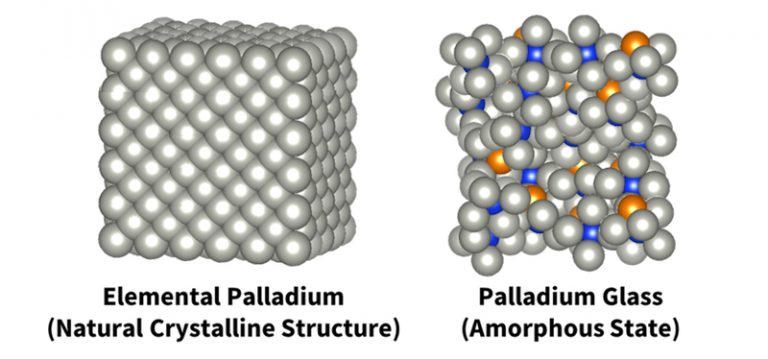
Hayashi adds, “We could infer from all the data available to us that palladium based metallic glass would get us the properties we were looking for. But you never know if something is going to work until you actually try it. I remember I was in a constant state of suspense until we finally saw the results of the MEMS sensor’s performance.”
With this new material, and Toshiba’s wealth of MEMS expertise, the development team had managed to create a working prototype. They were finally poised to solve the hydrogen-sensing conundrum, but there was still plenty of work ahead.
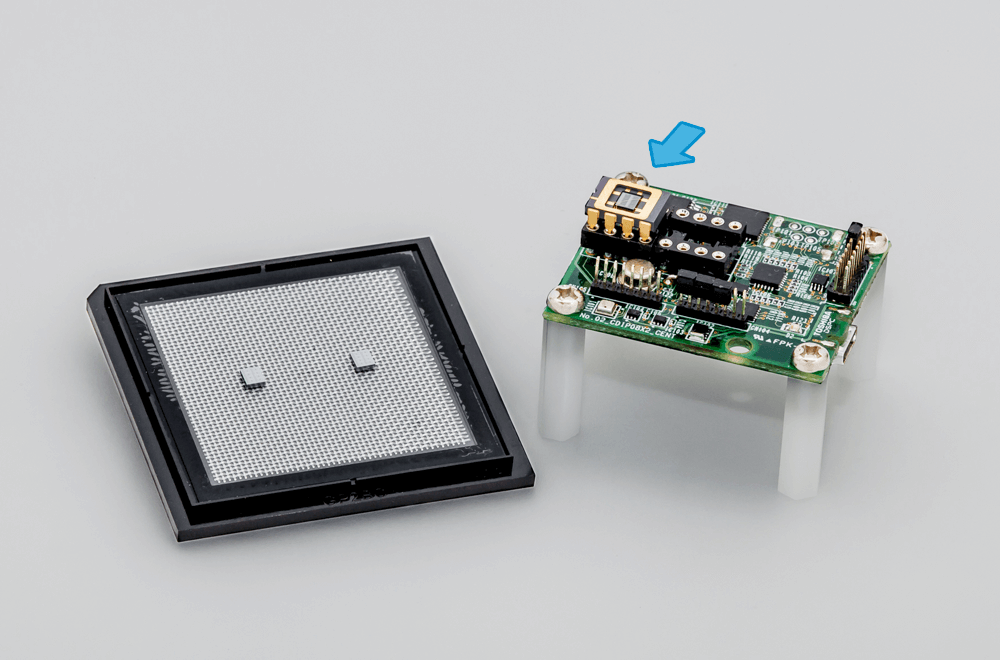
The newly developed chip, alone (left) and installed on a hydrogen sensor (right; location of chip indicated with arrow)
The prototype has numerous different components; future designs have the potential to be even smaller, depending on the desired functionality. But Yamazaki and Hayashi agree that for now, the next step is to get the sensor ready for mass production. And in order to do that, further tests and tweaks will be needed to ensure that it is both safe and reliable enough for general use.
Once hydrogen gains recognition as a source of energy that can be handled and used safely, we will see a natural expansion of its applications in daily life. Toshiba is working to realize a future where this type of sensor provides safety and assurance in all facets of a hydrogen-powered society.
![]()





